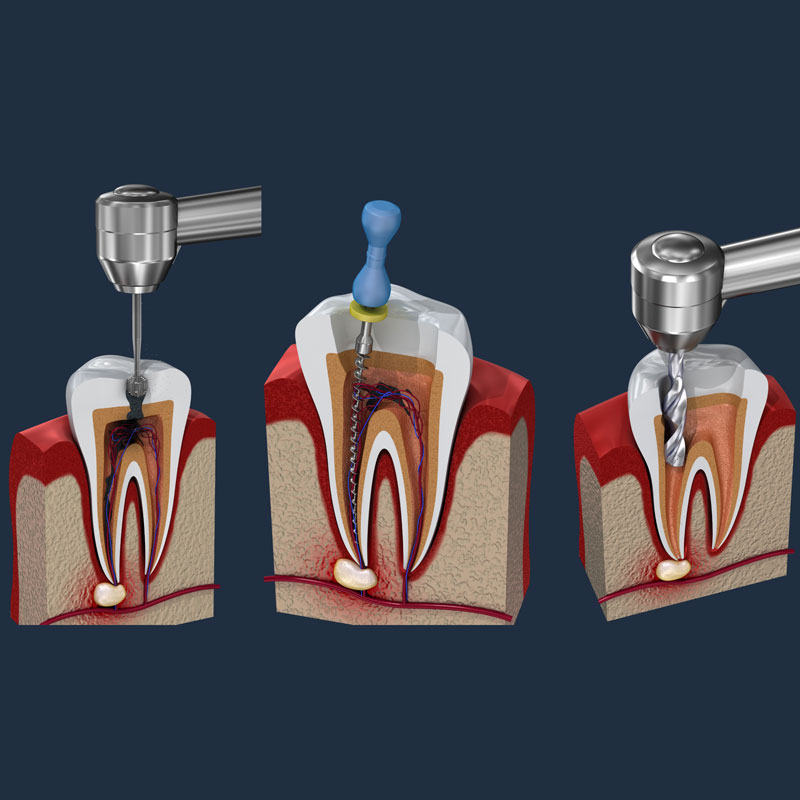Root Canal Treatment
Dallas Root Canal Treatment
Does the term “root canal” send shivers down your spine? You’re not alone. Many patients are fearful of this procedure. But despite its reputation, a root canal treatment (also known as endodontic treatment) is a much more conservative option than tooth extraction, and can actually be completely painless. Read on to learn when a root canal procedure is in order, and what to expect during and after treatment.
Contact Us
Do I Need a Root Canal Treatment?
If you’re experiencing a persistent toothache, there is a good chance that infection within the tooth may be to blame. When a tooth decays, the inner pulp material is susceptible to infection. Your body responds to the infection by activating white blood cells and antibodies, creating an inflammatory response. In other tissues within your body, swelling would occur at the site of the infection to accommodate the added volume from this immune response. The rigid structure of your tooth, however, cannot swell and instead, the passage of cells to and from the damaged pulp is restricted. Eventually, this causes the tooth to die and you’re left with a perpetual source of infection that can seep into the surrounding bone, causing an abscess.

How Is a Root Canal Performed?
During a root canal treatment, Dr. Vargas will first administer a local anesthetic to numb the affected tooth. She will then remove any dead or diseased tissue and thoroughly clean the inside of the tooth. Next, the hollow tooth is filled with an inert sealer material to ensure bacteria can no longer enter.
What to Expect
Root canal treatment is typically not traumatic or painful as its reputation implies. In fact, if your tooth has died, it will no longer have a feeling, and you would likely experience no pain at all, even without Novocain.
If you did have a toothache, the pain will be permanently resolved once the source of the infection is eliminated. A successful root canal is extremely durable and requires no maintenance or follow-up treatment.
